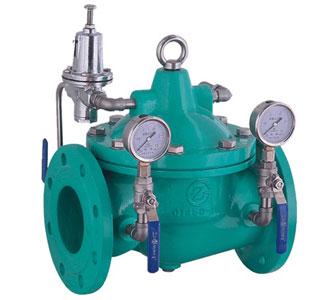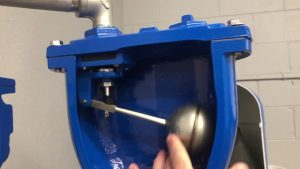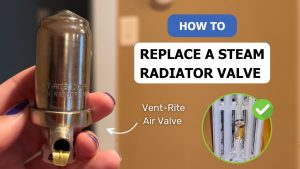Constant pressure control valves are designed for applications requiring stable outlet or inlet pressure. These applications include pasteurization, separation, filling systems, filters, filters, and heat exchangers.
What is a Constant Pressure Valve?
Constant pressure valves control the system pressure on the downstream side of the valve, i.e. to the tank, the pressure switch, and all points of usage in the house.

How does a Constant Pressure Valve work?
- Intermediate pressure Pe, between inlet pressure (primary pressure) P1 and outlet pressure (secondary pressure) P2, is formed inside the pilot valve and is transmitted to the top of the main valve to maintain an appropriate main valve opening.
- When the usage amount at the outlet side decreases and outlet pressure P2 rises above the set pressure, pilot A valve opens and pilot B valve closes to raise intermediate pressure Pe. This causes the main valve to become restricted and the outlet pressure to be reduced to the set pressure.
Conversely, when the usage amount at the outlet side increases and outlet pressure P2 drops below the set pressure, pilot A valve closes and pilot B valve opens to reduce intermediate pressure Pe. This causes the main valve to open and the outlet pressure to be raised to the set pressure. - With the same mechanism, the pilot valve responds to the fluctuation of the inlet pressure, thereby automatically adjusting the main valve opening appropriately and maintaining the outlet pressure at the set pressure.
- In the fully closed condition, the pilot B valve is closed completely by the outlet pressure and, at the same time, the inlet pressure is received effectively by the top of the main valve. The main valve is therefore shut firmly and the inlet and the outlet sides are shut off completely.
- The set pressure can be finely adjusted with the coil spring of the pilot valve.
If the main valve, pilot A valve, or pilot B valve becomes clogged by foreign material, the clogged valve opens in response to the change of pressure due to clogging and automatically removes the foreign material.
Structural Composition of Constant Pressure Valve
There is a diaphragm and spool plunger system inside the valve. The system will react immediately to the change of product pressure to adjust its position so as to keep the preset pressure unchanged. The valve operates through a pressure regulating valve for compressed gas and a pressure gauge on the production line. The optimized main body design gives CPM-2 the advantages of products that include extremely high cleanliness. Because the inlet is 90 degrees from the bottom of the main body of the valve, there is no residual liquid accumulation. A special plunger design allows less liquid flow and higher CIP flow. The constant pressure control valve is mainly used to ensure the constant sample water pressure in the water vapor sampling device. It is suitable for the company’s manual sampling current-limiting regulator valve. It can achieve constant sample water pressure and current, improve the accuracy of instrument measurement, and solve the interference of sample water pressure and flow fluctuation on instrument measurement.
Working process of Constant Pressure Valves
- 1. Constant pressure control device can set the outlet pressure between 0.05 and 0.5 Mpa by adjusting the handwheel. When the inlet pressure fluctuates greatly, the opening of the valve is automatically adjusted inside the valve to keep the outlet pressure stable.
- 2. The constant pressure control device has the function of overpressure protection. When the outlet pressure exceeds the set value, the valve closes automatically to prevent instrument damage.
Advantages of Constant Pressure Valve
- Capable of working in both flow directions (upstream and downstream)
- Precise valve cone control with multi-layer flat diaphragm design (long service life)
- Perfected cleanability no dead areas, no crevices fully open valve for sufficient CIP throughput
Excellent Pressure Control and Complete Liquid Shutoff Performance
With both opening and closing valve parts being aligned along a single axis, the pilot valve performs excellent pressure control under any condition.
The unique closure mechanism realizes complete water shutoff performance. The set outlet pressure is maintained even in the fully closed condition, therefore costs for pipes on the downstream side of the valve can be reduced.
The pilot valve does not have any minute, fixed restriction passage like a needle valve, and is therefore clog-resistant.
And, even if clogging by foreign material occurs, the built-in self-cleaning mechanism causes the clogged valve part to open automatically to remove the foreign material.
Due to its simple construction, troublesome adjustments are unnecessary. Being excellent in durability and practically maintenance-free, using this valve reduces maintenance costs.












